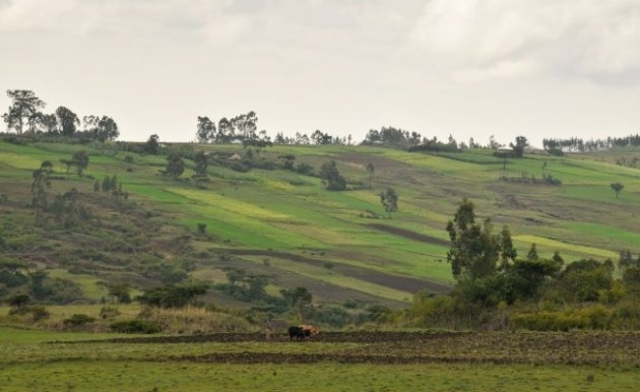 Bale Mountains, Ethiopia: Trees and shrubs can be seen growing on the steeper slopes along a ravine that was once plagued by erosion. (Photograph: Aaron Minnick/WRI)
Bale Mountains, Ethiopia: Trees and shrubs can be seen growing on the steeper slopes along a ravine that was once plagued by erosion. (Photograph: Aaron Minnick/WRI)
Fifteen years years ago the villages around Abrha Weatsbha in northern Ethiopia were on the point of being abandoned. The hillsides were barren, the communities, plagued by floods and droughts, needed constant food aid, and the soil was being washed away.
Today, Abrha Weatsbha in the Tigray region is unrecognisable and an environmental catastrophe has been averted following the planting of many millions of tree and bush seedlings. Wells that were dry have been recharged, the soil is in better shape, fruit trees grow in the valleys and the hillsides are green again.
The “regreening” of the area, achieved in just a few years for little cost by farming communities working together to close off large areas to animals, save water and replant trees, is now to be replicated across one sixth of Ethiopia – an area the size of England and Wales. The most ambitious attempt yet to reduce soil erosion, increase food security and adapt to climate change is expected to vastly increase the amount of food grown in one of the most drought- and famine-prone areas of the world.
“Large areas of Ethiopia and the Sahel were devastated by successive droughts and overgrazing by animals in the 1960s and 1970s,” says Chris Reij, a researcher with the World Resources Institute in Washington.
“There was a significant drop in rainfall, people had to extend the land they cultivated and this led to massive destruction and an environmental crisis across the Sahel. But the experience of Tigray, where over 224,000 hectares of land has now been restored shows that recovery of vegetation in dryland areas can be very fast. Tigray is now much more food secure than it was 10 years ago. You really see the changes there,” he says.
Rather than just plant trees, which is notoriously unreliable and expensive in dry land areas, the farmers have turned to “agro-ecology”, a way to combine crops and trees on the same pieces of land.
Video: A new documentary by film-maker Mark Dodd on the land restoration project in Tigray
—
Join the conversation on Twitter and Facebook.

























